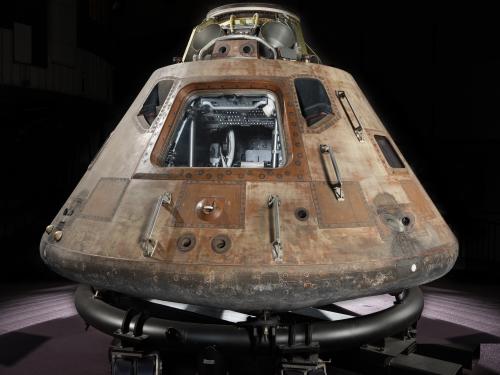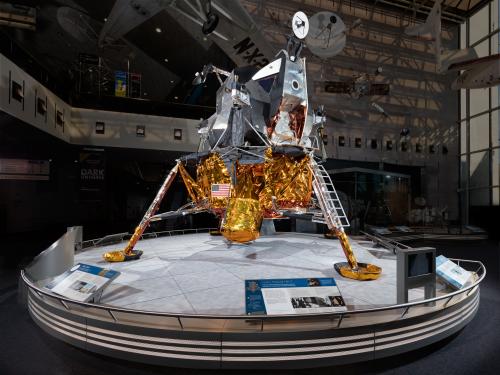
Stories of daring, stories of technological feats, stories of prevailing against the odds ... these are the stories we tell at the National Air and Space Museum. Dive in to the stories below to discover, learn, and be inspired.
Showing 101 - 110 of 176

March 22, 2018
How the Museum's conservation team treated an Apollo 11 artifact, a medical accessory kit stowed aboard the Command Module Columbia during the historic lunar mission.

February 01, 2018
For those involved or interested in human spaceflight, the last week of January is a solemn time of remembrance, as we commemorate Apollo 1 and the Space Shuttle missions Challenger and Columbia. How does our Museum deal with the memory of such tragedies?

January 19, 2018
As an astronaut, John Young (1930-2018) was one of a kind. He was the first person to fly in space six times, the first person to circle the Moon alone, the first Space Shuttle mission commander, and the first to command another Space Shuttle mission.

December 11, 2017
As the American space program once again looks toward the Moon, we revisit President John F. Kennedy’s 1961 challenge to land a man on the Moon and return him safely to the Earth.

October 14, 2017
Today, the Apollo 11 Command Module Columbia will go on display at Space Center Houston, the first of four stops in the national tour Destination Moon: The Apollo 11 Mission. This is the first time the Command Module has left the nation’s capital since 1971. If you plan to see the Module in your city—the tour will travel to St. Louis, Pittsburgh, and Seattle over the next two years—we have an excellent way to prepare. Or if you’re looking to dive into Apollo history on the comfort of your own couch, we also have you covered.

July 18, 2017
Showers, baths, swimming: these are all experiences most of us take for granted on Earth. There's nothing quite like experiencing the cool touch of water from the shower or jumping into a pool on a hot day. Gravity is what makes all of these experiences possible—it pushes that cool and refreshing water off your back and into the drain.
But all that changes in space. The lack of gravity causes water and soapsuds to stick to everything.

June 09, 2017
From dashing off a quick note to creating painstaking calligraphy, we often take writing for granted. But in space, where the stakes are high, how does one write? After all, the ink in pens isn’t held down by gravity, so how do you write upside down?

April 26, 2017
When the Museum’s Apollo Lunar Module (LM-2) moved to a prominent place in our Boeing Milestones of Flight Hall last year, it was an opportunity for us to examine the artifact in fine detail. We spared no effort to preserve, refurbish, and document the iconic object before it went on display in our central gallery in 2016. With careful research and close examination of photography from the Apollo 11 mission, we have been able to refine the accuracy of the external appearance of our LM-2 to more and more closely represent the appearance of LM-5 (Eagle) on the Moon.

February 25, 2017
We announced that the Apollo 11 Command Module “Columbia” will be a part of a national tour starting in October. Did you know this isn’t the spacecraft’s first tour? In 1970-71, NASA executed an ambitious public tour of Apollo 11 artifacts to 49 state capitals, the District of Columbia, and Anchorage, Alaska. The Command Module traveled nearly 26,000 miles for the tour. We share more interesting details of the first tour including which state had the largest crowds.

February 22, 2017
The last time the Apollo 11 Command Module Columbia traveled the US was in 1970. Almost 50 years later, the historic spacecraft that helped take us to the Moon and back is headed out on the road for a nationwide tour. Following the tour, the Command Module will be placed on permanent display in the exhibition Destination Moon, scheduled to open in 2020 at the Museum in Washington, DC. The Museum’s conservation team will spend the next six months preparing the artifact for travel and display. Conservator Lisa Young shares what the next few months will look like and what she’s most interested in finding out about Columbia.